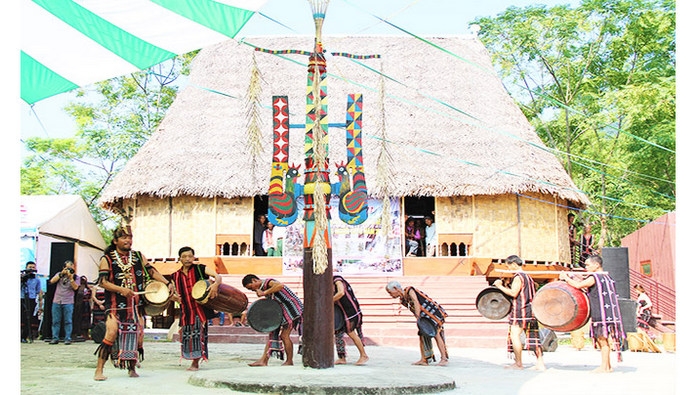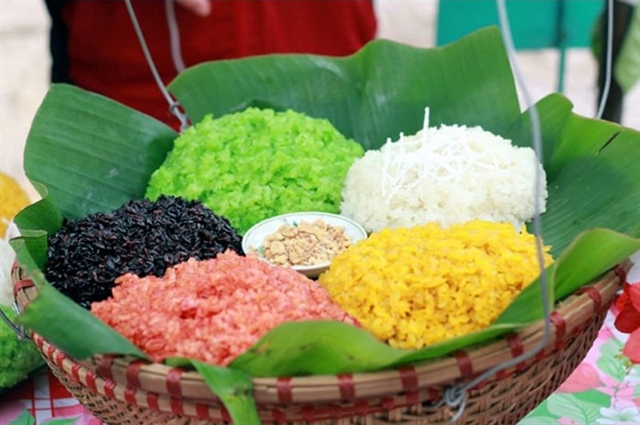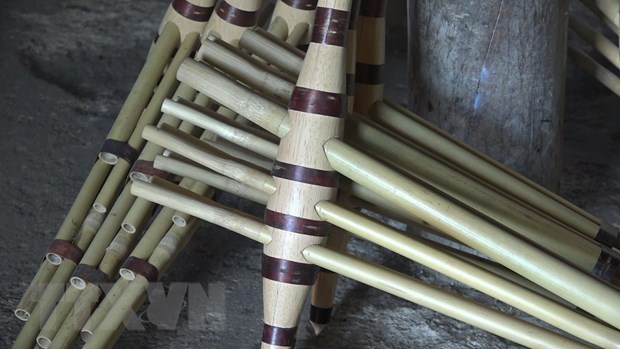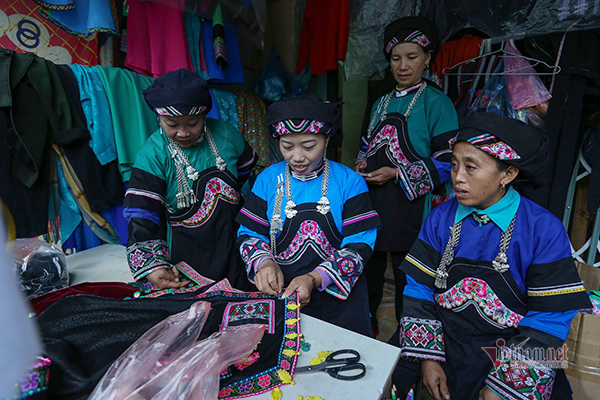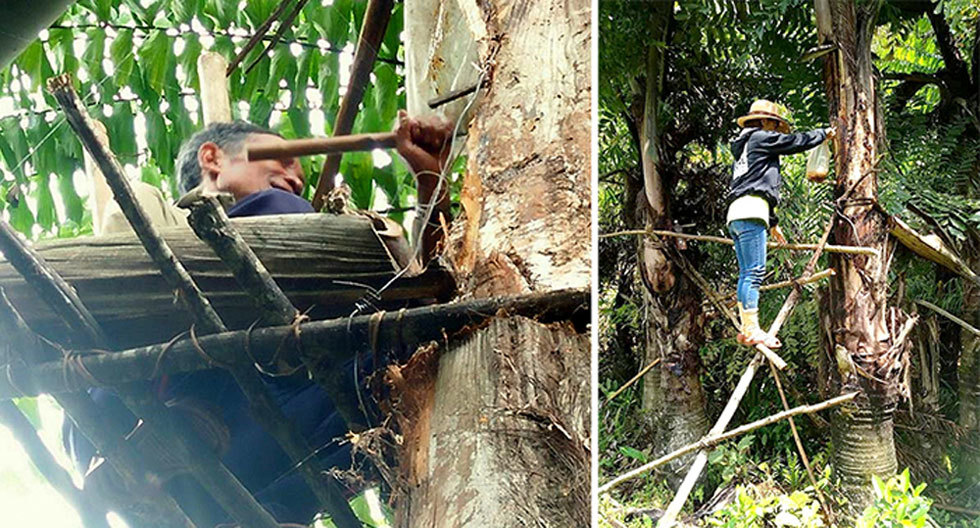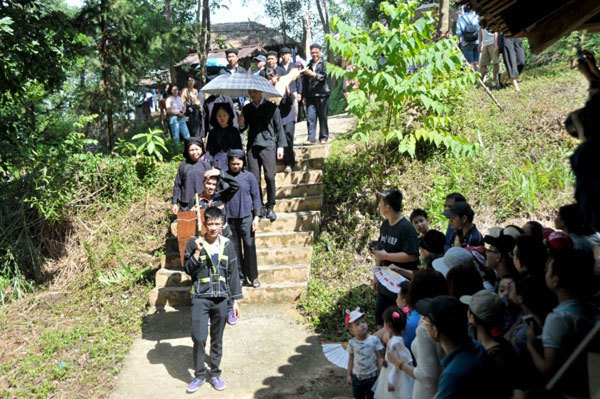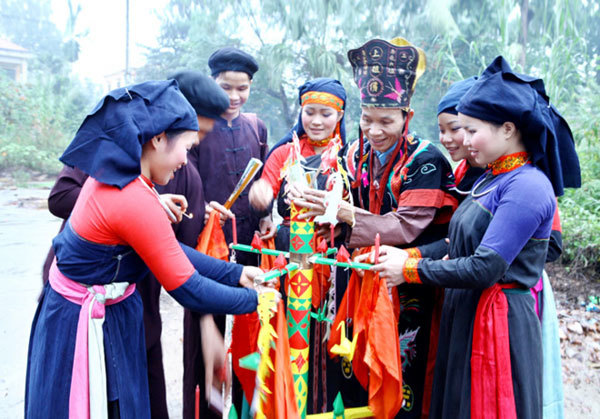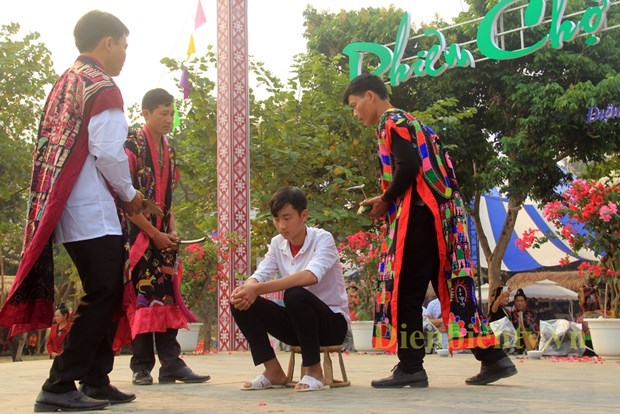- © Copyright of Vietnamnet Global.
- Tel: 024 3772 7988 Fax: (024) 37722734
- Email: evnn@vietnamnet.vn
vietnam ethnic groups
Update news vietnam ethnic groups
“Dance to Heaven” by Co Tu ethnic minority people
Co Tu ethnic minority people have preserved and promoted their unique traditional cultural and spiritual values, including their “dance to Heaven”.
Five-colour sticky rice of the Lu people
An indispensable dish found at every festive event of the Lự ethnic people in the northern province of Lai Chau is five-colour sticky rice.
Khen (panpine) – soul of Mong ethnic people
Although modern culture has been present in every corner of mountainous hamlets, the passion for melodies of Khen (panpine) has never ceased among men of the Mong ethnic group.
The unique wedding ceremony of the Bo Y ethnic minority
Only a handful of members of the Bo Y ethnic minority live in Vietnam.
Never too late: Bru ethnic woman starts school at age 66
Well into her sixties, Ho Thi Dan from Krong Klang Town, Dakrong District, central Quang Tri Province, has embarked on a brand new adventure: going to school.
Ba Na people’s year-end Thanksgiving for Gods
At the end of the year, Ba Na people in the Central Highlands province of Gia Lai gather at the Rong communal house to celebrate a Thanksgiving for deities and pray for good luck for the whole village.
Co Tu people’s Thanksgiving for parents
At the end of the year, when farm work finishes, the Co Tu ethic minority people visit relatives to tighten family bonds, the son-in-law usually brings special gifts for his in-laws.
Indigo clothes – a part of Nung culture
Traditional costumes have been the pride of the Nung ethnic community in Yen Son District in the northern province of Tuyen Quang for generations.
Unique calendar of Thai people
The Thai ethic minority people in the northern mountainous province of Son La use their own calendar to keep track of activities such as funerals, weddings, house groundbreakings and inaugurations, and farming.
‘Sky wine’ pouring from tree trunks in central Vietnam
The Co Tu ethnic people of Tay Giang district in the central province of Quang Nam have a special ‘wine’ called Tr’din.
Unique “trinh tuong” houses of Tay and Nung people
The northern border province of Lang Son is the home to 7 ethnic groups, which has long been famous for traditional houses called “trinh tuong” of the Tay and Nung people.
Special maturity ritual ceremony of Dao Tien ethnic people in Cao Bang
The Dao ethnic people consider “cap sac” (maturity ritual) to be sacred and the most important ritual in the life of every man. A Dao man must perform “le cap sac” to affirm his maturity and position in his community.
Wedding ritual of the Nung ethnic group in northern Vietnam
Young Nung boys and girls in the northern mountainous province of Lao Cai make friends and date when they work in the fields or go to market fairs.
Preservation of the Mong’s rattan weaving craft
Mong people make up 90% of the inhabitants in Lao Chai Commune of the northern mountainous province of Yen Bai. Their lives depend largely on agriculture and forestry.
Nha Lang – a symbol of power in ancient Muong society
Nha Lang (House of Lang- the landlord class of the Muong) is regarded as a symbol of power in ancient Muong society. It showcases the lives of the highest stratum of one of the four largest ethnic groups in Vietnam.
Ethnic Cao Lan group treasure traditional costumes
The Cao Lan, one of two branches of the San Chay living in a number of northern mountain and midland provinces, often wear their traditional clothes to celebrate important life events, spring ceremonies, and festivals.
Bell dance of Dao Tien ethnic group
Dao Tien ethnic people in the northern mountainous province of Son La have been exerting their efforts to preserve bell dancing, which is considered a crucial part of their traditional rituals.
Tet of the San Diu
The San Diu ethnic minority group, who live in northern mountainous areas with a population of nearly 147,000, celebrate quite a lot of festivals the most important of which is Tet, the lunar New Year festival.
Early New Year festival of Cong ethnic people
The Cong ethnic people in the northwestern region of Vietnam celebrate their Tet (New Year) festival, locally known as Tet hoa mao ga or Cockscomb flower Tet), in the 11th lunar month, praying for a new bumper crop harvest in the new year.
Dien Bien: Dao people’s maturity ritual recognised as national intangible heritage
The “cap sac” (maturity ritual) of the Dao Quan chet ethnic minority people in the northwestern mountainous province of Dien Bien’s Tua Chua district has been recognised as a national intangible cultural heritage
